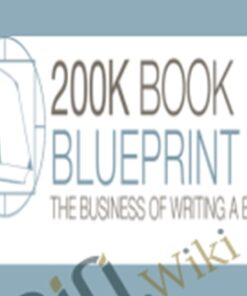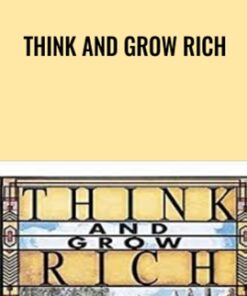Empower Kids and Teens in Trauma Healing with EMDR: Clinical Strategies & Playful Pathways
Working with kids and teens affected by trauma requires unique approaches that incorporate both clinical expertise and age-appropriate techniques. EMDR for Kids and Teens: Clinical Strategies & Playful Pathways for Trauma Healing by Ana Gomez, MC, LPC, and Christine Mark Griffin, provides clinicians with specialized techniques in Eye Movement Desensitization and Reprocessing (EMDR) adapted for young clients. This course integrates playful, developmentally suitable methods to foster trauma healing, emotional regulation, and resilience in children and adolescents, making it a valuable tool for any therapist or counselor.
Why EMDR is Effective for Young Clients
EMDR has proven to be a powerful trauma therapy method by directly addressing how traumatic memories are stored and processed in the brain. Children and teens often benefit from tailored EMDR approaches, combining clinical practices with creative, playful elements to match their developmental needs. This course covers the fundamentals of EMDR therapy, alongside strategies for adjusting techniques to engage young clients, creating a safe environment for healing, and enhancing emotional growth.
What You’ll Learn in EMDR for Kids and Teens
The EMDR for Kids and Teens course is structured to provide a comprehensive guide for adapting EMDR to young clients. Each module focuses on effective methods for combining EMDR with age-appropriate practices:
- Understanding EMDR for Childhood Trauma
Learn how trauma impacts young clients differently, requiring a unique approach to EMDR that emphasizes emotional safety and understanding developmental needs.
- Using Playful Strategies for Trauma Healing
Discover ways to incorporate play therapy and creative strategies into EMDR sessions, making the process accessible and engaging for children and teens.
- Building Emotional Regulation Skills
This module covers techniques to foster emotional awareness and regulation, helping young clients build skills to manage trauma-related responses effectively.
- Parental and Caregiver Involvement
Parental involvement is crucial for the young client’s healing journey. Learn strategies for guiding parents and caregivers in supporting their children’s EMDR therapy and promoting healthy attachment.
- Practical Applications and Case Studies
Examine real-world case studies that demonstrate EMDR therapy in action with kids and teens, providing a model for handling diverse trauma responses.
Who Should Enroll in EMDR for Kids and Teens?
EMDR for Kids and Teens is ideal for therapists, counselors, social workers, and mental health professionals who work with children and adolescents affected by trauma. The course provides a complete toolkit for professionals who want to incorporate EMDR techniques and play-based therapeutic strategies, giving them confidence in navigating complex emotional and behavioral challenges.
Benefits of Enrolling in the Course
- Age-Appropriate EMDR Techniques: Learn to tailor EMDR therapy to young clients’ developmental stages, ensuring therapeutic strategies resonate effectively.
- Enhanced Client Engagement: Creative play and involvement techniques foster a comfortable environment where young clients can engage more readily in trauma work.
- Improved Emotional Resilience: Equip children and teens with tools to manage trauma symptoms and promote long-term emotional stability.
Why Learn from Ana Gomez and Christine Mark Griffin?
Ana Gomez and Christine Mark Griffin bring extensive experience in EMDR, trauma recovery, and child therapy. Known for their expertise in adapting therapeutic practices to young clients, their combined insights make this course comprehensive and practical. Their teaching approach is grounded in evidence-based practices, providing actionable tools and compassionate techniques that align with children’s emotional needs.
Course Highlights
- Real-Life Case Studies and Examples: Engage with examples of EMDR applications in real scenarios, illustrating effective trauma interventions for children and adolescents.
- Hands-On Techniques and Play-Based Exercises: Participate in exercises that show how to blend EMDR practices with creative play, enhancing the accessibility of trauma healing.
- Downloadable Resources and Activity Templates: Use resources like worksheets, activities, and therapeutic guides in sessions, making it easy to implement and adapt techniques with young clients.
Practical Applications of EMDR for Kids and Teens
The course offers versatile skills applicable across various settings:
- School and Counseling Environments: Apply EMDR techniques in schools or counseling centers, helping young clients navigate trauma and build resilience in supportive settings.
- Family Therapy and Parent Counseling: Involve caregivers in the therapy process, equipping them to foster a healing environment that extends beyond therapy sessions.
- Trauma and Crisis Intervention: Use trauma-informed techniques to support children and teens dealing with crisis situations, from community trauma to personal challenges.
Success Stories from Course Graduates
Professionals who have completed EMDR for Kids and Teens report transformative outcomes in their practice. Here are a few testimonials:
- Increased Client Comfort: “The playful approaches have made a huge difference in how comfortable kids feel, making therapy sessions more effective.”
- Empowered Caregivers: “This course gave me practical ways to involve parents, which has been instrumental in supporting my young clients’ progress.”
- Deeper Trauma Processing: “I can see the positive impact EMDR is having on my clients as they’re able to process trauma safely and build emotional resilience.”
Why This Course Stands Out
EMDR for Kids and Teens stands out by combining clinical EMDR strategies with developmentally appropriate, creative approaches designed for young clients. Unlike general trauma courses, this program is tailored specifically for children and adolescents, helping therapists apply EMDR techniques effectively in a way that engages, supports, and heals young minds. The course combines evidence-based practices with real-life applications, ensuring participants are equipped to foster positive, lasting change.
Frequently Asked Questions
Q: Is this course suitable for practitioners new to EMDR?
A: Yes. The course includes foundational aspects of EMDR, making it accessible for both beginners and experienced practitioners.
Q: How long does the course take to complete?
A: EMDR for Kids and Teens is self-paced, allowing you to progress through each module at your convenience.
Q: Can these techniques be adapted for various ages?
A: Absolutely. The strategies covered are versatile and adaptable to a range of ages, ensuring suitability for children and teens.
The Importance of Specialized Trauma Therapy for Kids and Teens
The impact of trauma on young clients underscores the need for specialized approaches that consider their developmental stages and emotional needs. EMDR for Kids and Teens: Clinical Strategies & Playful Pathways equips therapists to provide trauma healing that’s both compassionate and clinically sound, enabling kids and teens to reclaim stability and resilience. This course fosters an environment of empathy, understanding, and effective healing, empowering professionals to make a difference in young clients’ lives.
Final Thoughts: Is EMDR for Kids and Teens Right for You?
If you’re ready to deepen your skills and help children and teens recover from trauma with compassionate, evidence-based techniques, EMDR for Kids and Teens: Clinical Strategies & Playful Pathways by Ana Gomez and Christine Mark Griffin is an invaluable resource. From creative play to EMDR adaptations, each module offers a pathway to impactful healing.
Enroll Today to start empowering young clients with the resilience and peace they deserve.
 $1K A Day Fast Track – Merlin Holmes
1 × $123.00
$1K A Day Fast Track – Merlin Holmes
1 × $123.00 Living the Legacy - Bob Proctor
1 × $250.00
Living the Legacy - Bob Proctor
1 × $250.00 Rhode Island Legal and Ethical Issues for Mental Health Clinicians - Susan Lewis
1 × $84.00
Rhode Island Legal and Ethical Issues for Mental Health Clinicians - Susan Lewis
1 × $84.00 "Male Physique Training Templates" - Renaissance Periodization
1 × $42.00
"Male Physique Training Templates" - Renaissance Periodization
1 × $42.00 10,000 Royalty Free Photos - Alun Hill
1 × $195.00
10,000 Royalty Free Photos - Alun Hill
1 × $195.00 Battlefield Kali Sword - JKD Unlimited
1 × $49.00
Battlefield Kali Sword - JKD Unlimited
1 × $49.00 $200k Book Blueprint Training – Richelle Shaw
1 × $96.00
$200k Book Blueprint Training – Richelle Shaw
1 × $96.00 2-Day: Medical Screening and Differential Diagnosis Intensive Training Course - Shaun Goulbourne
1 × $180.00
2-Day: Medical Screening and Differential Diagnosis Intensive Training Course - Shaun Goulbourne
1 × $180.00 Shapeshifting Your Reality - John Perkins
1 × $92.00
Shapeshifting Your Reality - John Perkins
1 × $92.00 Think and Grow Rich - Napoleon Hill
1 × $23.00
Think and Grow Rich - Napoleon Hill
1 × $23.00 Advanced Killer Chicken Wings - Erik Paulson
1 × $34.90
Advanced Killer Chicken Wings - Erik Paulson
1 × $34.90 $0 to $100,000 on Amazon (Premium Live Training) – Matt Clark and Jason Katzenback
2 × $193.00
$0 to $100,000 on Amazon (Premium Live Training) – Matt Clark and Jason Katzenback
2 × $193.00 14-Day Options Trading Bootcamp (Jule 2014) – Sang Lucci
1 × $50.00
14-Day Options Trading Bootcamp (Jule 2014) – Sang Lucci
1 × $50.00 10 Brain-Based Strategies to Help Children in the Classroom: Improve Emotional, Academic & Social Skills for Back to School - Tina Payne Bryson
1 × $29.00
10 Brain-Based Strategies to Help Children in the Classroom: Improve Emotional, Academic & Social Skills for Back to School - Tina Payne Bryson
1 × $29.00 $20K Daily On Clickbank And FB With This 3 Step System – Commission Hero
1 × $123.00
$20K Daily On Clickbank And FB With This 3 Step System – Commission Hero
1 × $123.00 Dan On Demand - Dan Lok
1 × $202.00
Dan On Demand - Dan Lok
1 × $202.00 10 Steps to Learn Anything Quickly - John Sonmez
1 × $104.00
10 Steps to Learn Anything Quickly - John Sonmez
1 × $104.00 Make 'Em Laugh & Take Their Money - Dan Kennedy
Make 'Em Laugh & Take Their Money - Dan Kennedy